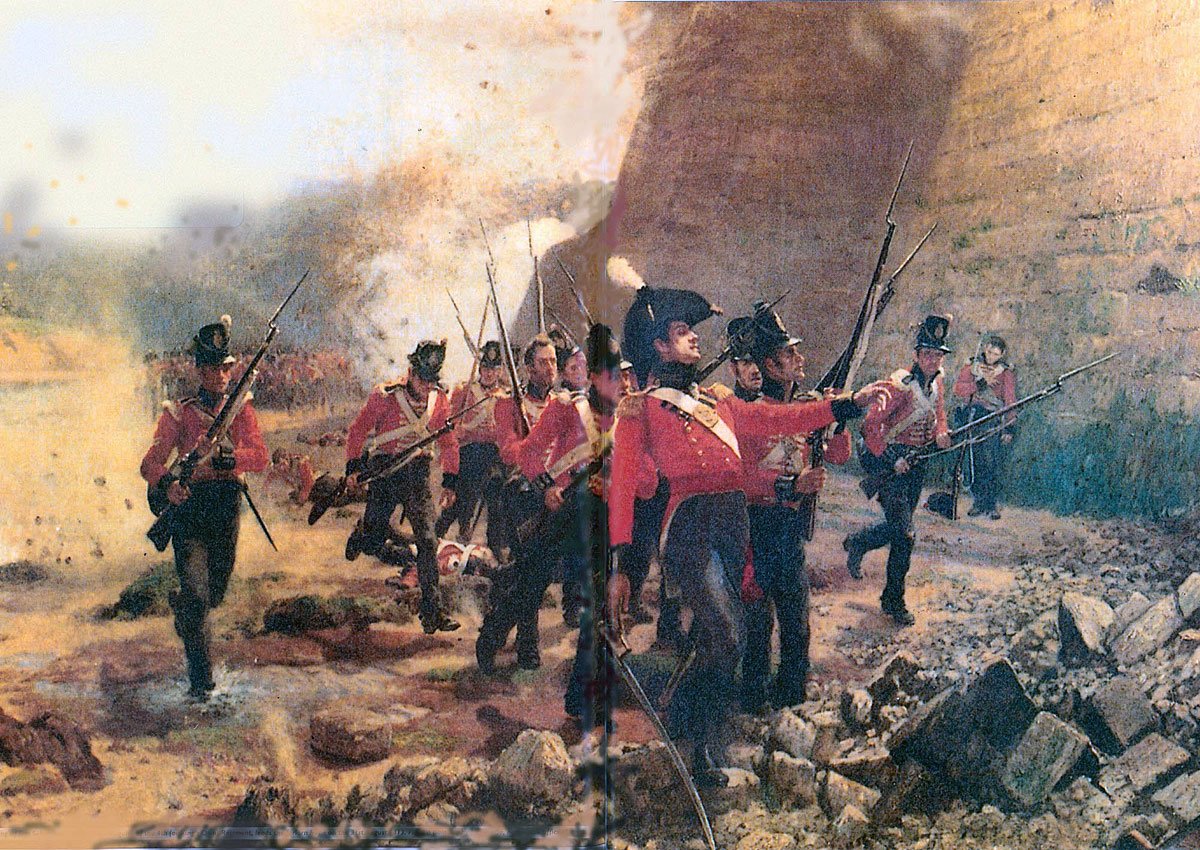If you have been reading Bernard Cornwell's Sharpe novels, then you will remember the Forlorn Hope at the 1812 Siege of Badajoz during Britain's Peninsular war against Napoleon. Badajoz was an impregnable Spanish fortress defended by a large French force. The siege was one of the bloodiest during the Napoleonic War and the casualties numbered 4,800 Anglo-Portuguese soldiers killed or wounded in a few short hours of intense fighting. And who did Wellington, the allied commander, use to attack the breaches? The Forlorn Hope, of course. They were always the first men in any suicidal assault on the breached walls.
What a wonderful name for a hopeless and insanely dangerous enterprise! The Forlorn Hope was made up entirely of volunteers. They were the vanguard in all extremely dangerous military operations. The Forlorn Hope was responsible for drawing the defenders' fire and forcing the enemy to spring their carefully prepared explosive traps. The chances of survival in this kind of work were minimal at best.
Why would someone volunteer for such dangerous work? For promotions, bonuses and for fame. In the British army, the lieutenant who commanded the Forlorn Hope would be instantly promoted to captain, a sergeant to ensign and so on. The men who survived these suicidal assaults became famous among their comrades and much envied by lesser men. In the ranks of British riflemen, they often wore a laurel-wreath badge on their sleeve to mark their courage.
The army didn't care much about their promises of promotion, because they rarely had to honour their commitments, so few men survived. Still, there was never a lack of volunteers for the Forlorn Hope. The term first appeared in the 1500s and came from the Dutch expression "verloren hoop", which means an expendable squad of soldiers. In the French army, the Forlorn Hope were known as "les enfants perdus" and in the German army "Der verlorene haufen" meaning the lost children or lost troops.
In English, the Forlorn Hope was any desperate undertaking with little chance of success. Although it was likely that most of the men would be killed in the first few seconds of the assault, some were expected to survive long enough to gain a foothold in the enemy defenses that could be reinforced by the first wave of regular troops. The Forlorn Hope was sacrificed to reduce the loss of life among the most precious regiments in a military attack. Forlorn Hopes were led by ambitious junior officers hoping for advancement and sometimes even conscripted criminals were recruited for the Forlorn Hope.
It is hard to believe today that volunteers could be found to fight against the enemy when the odds of survival were so slim but back in those days there were more than enough volunteers. In a way, the Forlorn Hope was a reflection of society. Back in the days of muskets and bayonets, war heroes were celebrated everywhere. They were the brave men who had sacrificed so much for their country and society owed them. Even today, people love their war heroes and celebrate them.
The existence of the Forlorn Hope tells us a lot about our young men today who all believe they are immortal and will live forever. You see it in combat, in punishing physical sports and dangerous pastimes. Chance is on their side. They all want to be heroes.
*Originally posted in May 2022


Comments ()